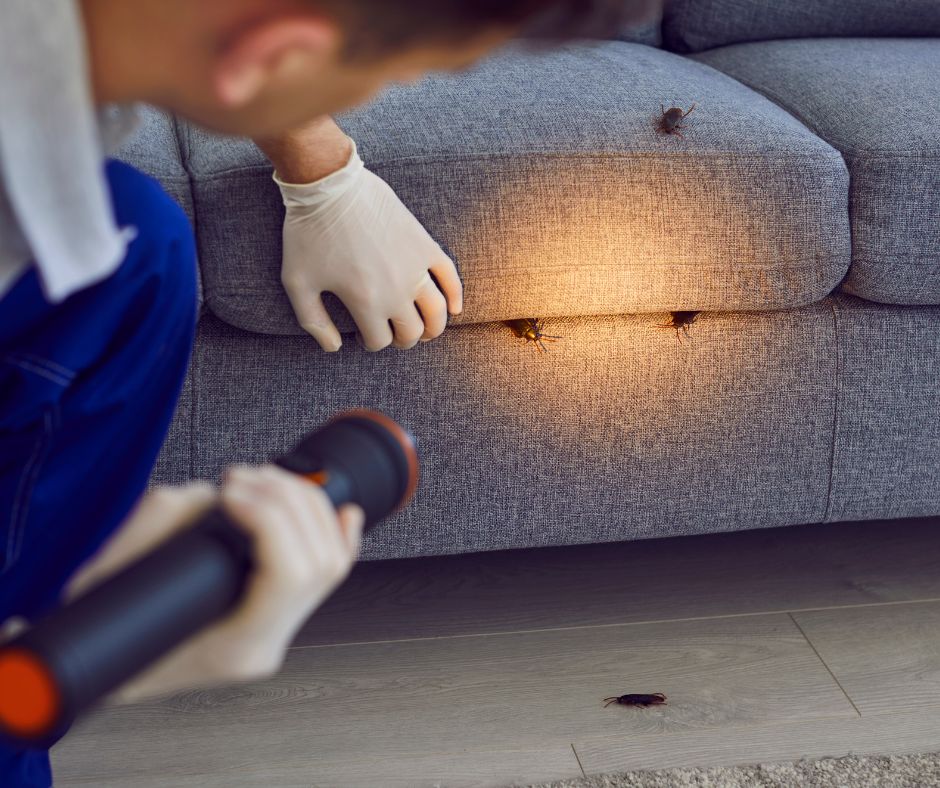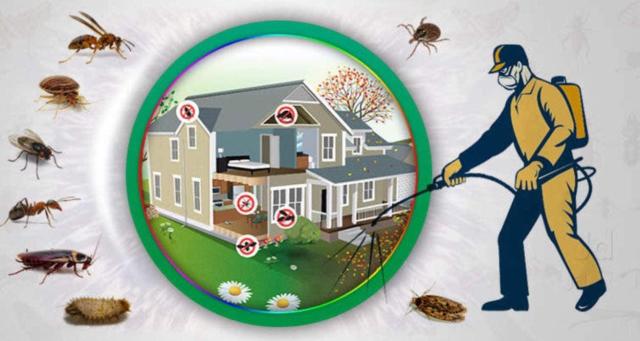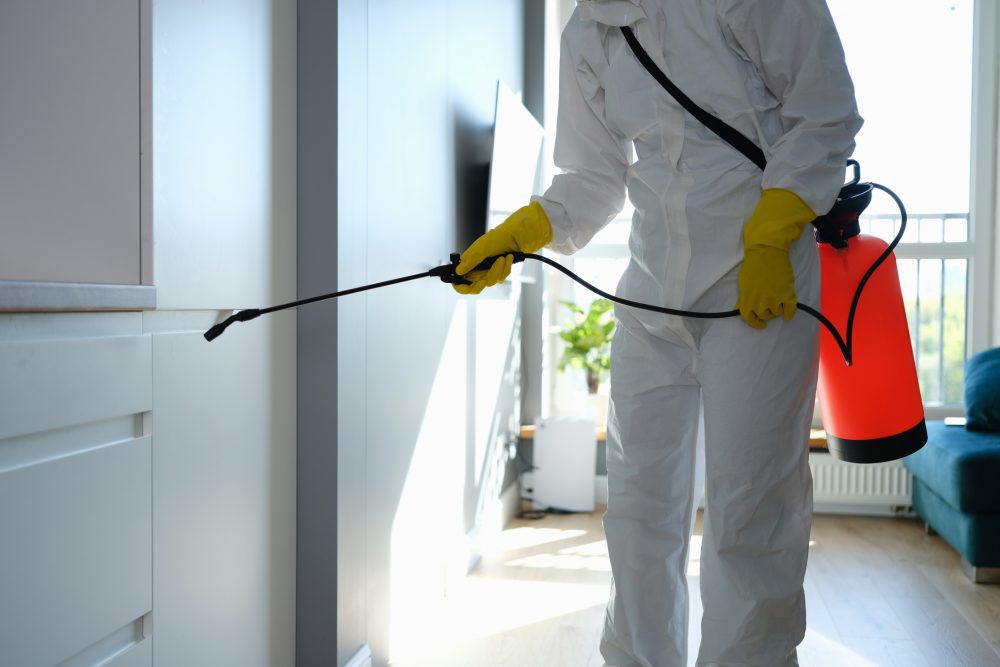Fast Pest Control in Port Charlotte
Fast Pest Control in Port Charlotte
Blog Article
Comprehensive Guide to Recognizing Parasite Control Methods and Their Therapy
Comprehending bug control approaches is essential for efficient management of undesirable microorganisms that pose dangers to health and wellness, agriculture, and home. What factors should be considered when choosing the appropriate insect control approach for a particular situation?
Introduction of Parasite Control Techniques
Bug control techniques encompass a variety of methods developed to take care of and remove undesirable microorganisms that can hurt human health, farming, and building. Reliable bug administration is vital for maintaining the integrity of ecological communities and guaranteeing the safety and security of food supplies. These approaches can be generally classified right into 3 main methods: cultural, mechanical, and organic controls.

Cultural control includes customizing farming methods or ecological problems to lower insect facility and recreation. This method includes plant turning, sanitation, and picking pest-resistant plant varieties. Mechanical control counts on physical obstacles or tools to avoid bug gain access to or straight remove them. Examples consist of traps, nets, and hand-picking unsafe pests.
Organic control uses all-natural killers, bloodsuckers, or virus to manage pest populaces. This technique emphasizes environmental balance and can consist of introducing advantageous pests, such as ladybugs or predative nematodes, to take care of bug existence.
Integrated insect administration (IPM) integrates these techniques, using an all natural technique that stresses prevention, surveillance, and liable management. By utilizing a mix of these techniques, pest control can be more sustainable and efficient, reducing dependence on chemical treatments while safeguarding human health and the environment.

Chemical Bug Control Solutions
A range of chemical bug control remedies are offered, offering efficient choices for handling pest populaces when other techniques might drop brief. These options largely include insecticides, herbicides, fungicides, and rodenticides, each created to target specific bugs while reducing injury to non-target organisms.
Pesticides are especially efficient against an array of insects, consisting of ants, cockroaches, and termites, and can be categorized as get in touch with or systemic representatives. Contact insecticides kill pests on contact, while systemic pesticides are absorbed by plants, making them harmful to bugs that eat them. Herbicides are utilized to regulate unwanted plants, whereas fungicides are important for taking care of fungal illness that can harm plants and ornamental plants.
Rodenticides, created for rodent control, are offered in various formulas, including baits and tracking powders. It is vital to follow tag guidelines diligently to ensure security and efficacy. In addition, integrated pest monitoring (IPM) principles need to be utilized, combining chemical solutions with social, mechanical, and biological strategies for lasting pest control. This alternative technique not just boosts pest administration performance yet also lowers potential environmental impacts linked with chemical usage.
Organic Pest Control Strategies
Biological insect control methods use an eco friendly option to chemical approaches by utilizing all-natural killers, parasites, or pathogens to handle parasite populaces. This technique leverages the ecological relationships in between microorganisms, advertising a well balanced ecosystem while minimizing chemical deposit in the atmosphere.
One of the most common organic control techniques includes the intro of all-natural opponents. Ladybugs are employed to manage aphid populaces, while parasitical wasps can target caterpillars and other bugs. These natural killers properly lower pest numbers without hurting valuable insects.
Additionally, microbial representatives such as germs, fungis, and viruses are utilized to contaminate and eliminate specific insects. Bacillus thuringiensis (Bt), a naturally taking place germs, is extensively made use of to manage caterpillars and other larvae, our website showcasing the efficiency of microbial parasite control.

Physical and Mechanical Methods
Often employed in incorporated parasite administration strategies, physical and mechanical approaches offer as efficient devices for controlling pest populations without using chemicals. These methods depend on physical barriers, catches, and various other mechanical devices to stop or get rid of bugs, making them ecologically friendly choices.
Physical methods include making use of barriers such as insect netting, screens, or row covers that literally block parasites from accessing plants. This is specifically useful in agricultural setups where crop security is vital. In addition, environment manipulation, such as getting rid of debris and standing water, can lower pest reproducing websites, thereby reducing problems.
Mechanical approaches encompass catches, which can be developed to catch particular parasites. Sticky traps and pheromone catches are common instances that tempt and maintain bugs, facilitating tracking and control. Vacuuming is one more mechanical approach, effective for removing insects from indoor atmospheres, especially in situations of infestations.
Preventative Bug Administration Methods
Reliable preventative insect management approaches are crucial for preserving healthy and balanced atmospheres and lessening pest-related problems view it prior to they arise (Pest Control in Port Charlotte, FL). These methods concentrate on proactive actions that lower the probability of parasite infestations by addressing the root causes

An additional important strategy includes correct landscaping methods (Pest Control in Port Charlotte, FL). Keeping vegetation cut and away from buildings can lower harborage areas for parasites. Similarly, executing integrated bug management (IPM) visit this page methods that consist of keeping track of bug populaces and utilizing organic controls can promote a well balanced environment that naturally reduces pest numbers.
Education and training for team and homeowners on recognizing early indications of parasite task are additionally key elements of an efficient preventative program. By promoting an atmosphere of understanding and watchfulness, organizations and property owners can greatly boost their pest management initiatives and secure their rooms versus future problems.
Conclusion
Using an Integrated Bug Administration (IPM) framework enables for the lasting monitoring of bugs while reducing environmental influence. Inevitably, an extensive understanding of these varied pest control techniques is vital for achieving successful end results in parasite management efforts.
Report this page